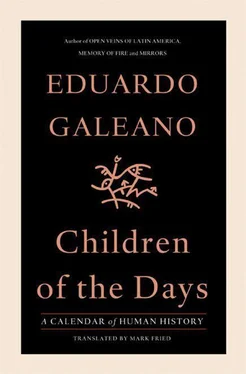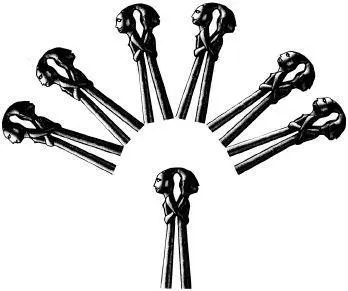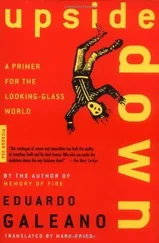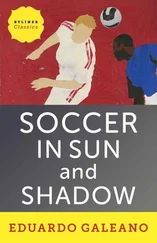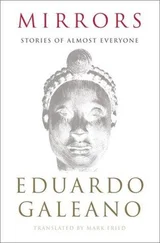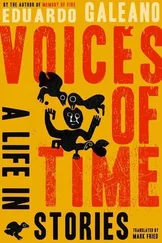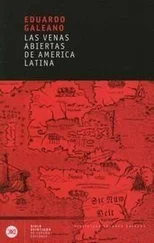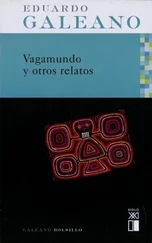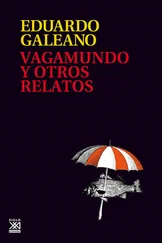Much later, on the plantations of Yucatán, Maya slaves, who were treated as things, rose up against the masters who gave orders by whip, because they said Indians had their ears on their backs.
On this night in 1847, war broke out. For half a century slaves would occupy the plantations, and they burned the documents that legalized their enslavement and the enslavement of their children and the enslavement of their children’s children.
August 1. OUR MOTHER WHO ART IN EARTH
Today in the towns of the Andes, Mother Earth, Pachamama, celebrates her big fiesta.
Her children sing and dance on this everlasting day, and they share with Mother Earth a mouthful of every corn delicacy, and a sip of each of the strong drinks that lubricate their joy.
At the end they ask forgiveness for the harm the despoiled and poisoned earth has suffered, and they plead with her not to punish them with earthquakes, frosts, droughts, floods or other furies.
This is the oldest faith in the Americas.
Here is how the Tojolobal Mayas of Chiapas greet our Mother:
You offer us beans ,
which are so delicious
with hot peppers, with tortilla .
Corn you give us, and fine coffee .
Dear mother ,
take good care of us, do .
And may it never occur to us
to put you up for sale .
She does not live in heaven. She lives in the depths below ground, and there she awaits us: the earth that feeds us will feed on us in turn.
On this day in 1980, Colombian boxer Kid Pambelé, out cold on the canvas, lost his world title.
He was born in Palenque, the old refuge for rebel slaves, and before becoming world champion he sold newspapers, shined shoes and boxed in little towns lost on the map in return for food.
Eight years his glory lasted. More than a hundred bouts, only twelve defeats.
He ended up throwing punches at his own shadow.
This story began when the gods, envious of human passion, punished Zhinü the weaver and her lover, whose name has been forgotten. The gods severed their embrace, which had made them one, and condemned each to solitude. Ever since, they live on either side of the Milky Way, the great celestial river that cannot be crossed.
But once a year and for one night only, on the seventh night of the seventh moon, what was rent can be sewn.
Magpies lend a hand, or rather a wing. Linking wings, they form a bridge for the nighttime encounter.
Weavers, embroiderers and tailors from all over China are on pins and needles, praying it will not rain.
If it does not, the weaver Zhinü gets under way. The dress she slips on and will soon slip off is the work of her masterful hands.
But if it rains, the magpies will not come, no bridge across the heavens will knit up what has been unraveled, and on earth no festival will celebrate the art of loom and needle.
August 4. CLOTHING TELLS THE TALE
Some two thousand years ago the great city of the Miaos was razed.
As ancient Chinese manuscripts reveal, somewhere in the vast plains between the Yellow and Yangtze Rivers, lay a city where “people with wings who called themselves the Miaos lived.”
There are nearly ten million Miaos in China today. They speak a language that was never written down, but they dress in clothing that speaks of their lost grandeur. With silk threads they weave the story of their origins and their exodus, their births and their burials, wars of gods and of men, and also the monumental city that no longer is.
“We wear the city,” one of the oldest of them explains. “The gate is in the cowl. The streets run all over the cloak, and on the shoulders our gardens grow.”
August 5. THE LIAR WHO WAS BORN THRICE
In 1881, when Pinocchio was no more than two months old, he was already an idol among Italy’s children.
The book that narrated his adventures sold like candy.
Pinocchio was created by the carpenter Geppetto, who in turn was created by the writer Carlo Collodi. As soon as Geppetto made his hands, pinewood hands, the doll pulled off the carpenter’s wig and revealed his bald pate. No sooner had he made his legs than Pinocchio took off running to complain to the police.
Collodi was fed up with the shenanigans of this mischievous brat and decided to hang him. He left him swinging from a holm oak.
Soon enough, besieged by the children of all Italy, Collodi had to bring him back to life. That was his second birth.
The third birth was a few years in coming. In 1940 Walt Disney stirred up a jam of honey and tears in Hollywood and resurrected Pinocchio, miraculously made good.
In 1945, while this day was dawning, Hiroshima lost its life. The atomic bomb’s first appearance incinerated this city and its people in an instant.
The few survivors, mutilated sleepwalkers, wandered among the smoking ruins. The burns on their naked bodies carried the stamp of the clothing they were wearing when the explosion hit. On what remained of the walls, the atom bomb’s flash left silhouettes of what had been: a woman with her arms raised, a man, a tethered horse.
Three days later, President Harry Truman spoke about the bomb over the radio.
He said: “We thank God that it has come to us, instead of to our enemies; and we pray that He may guide us to use it in His ways and for His purposes.”
Mata Hari was born on this day in 1876.
Sumptuous beds were her battlefields in World War I. Top military and political leaders succumbed to her charms, and they confided secrets she then sold to France or Germany or whomever would pay more.
In 1917 a French military court condemned her to death.
The most beloved spy in the world blew kisses to the firing squad.
Eight of the twelve soldiers missed.
Today in 1553 marked the end of Girolamo Fracastoro’s life. The Italian physician and writer had researched syphilis, among other contagious diseases, and concluded that the malady did not come to Europe from the Indians of the Americas.
In our time, Moacyr Scliar, Fracastoro’s Brazilian colleague in science and letters, continued demolishing the myth of the supposed “American curse.”
Long before the conquest of the New World, the French called syphilis “the Italian disease,” and the Italians called it “the French disease.”
The Dutch and the Portuguese called it “the Spanish disease.”
It was “the Portuguese disease” for the Japanese, “the German disease” for the Polish and “the Polish disease” for the Russians.
And the Persians believed it came from the Turks.
August 9. INTERNATIONAL DAY OF INDIGENOUS PEOPLES
Rigoberta Menchú was born in Guatemala four centuries and a half after the conquest by Pedro de Alvarado, and five years after Dwight Eisenhower conquered it once more.
In 1982, when the army swept through the Mayas’ highlands, nearly all of Rigoberta’s family was wiped out. Erased from the map was the village where her umbilical cord had been buried so she would set down roots.
Ten years later, she received the Nobel Peace Prize. She declared: “I receive this prize as an homage to the Maya people, even though it arrives five hundred years late.”
Читать дальше
